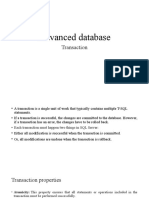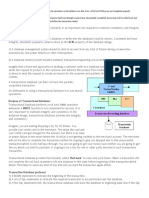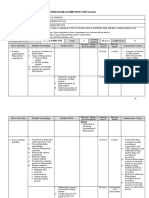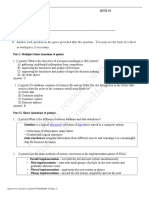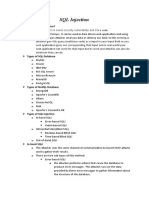0% found this document useful (0 votes)
39 views11 pagesTransaction in SQL Server
The document provides an overview of transactions in SQL Server, highlighting their importance for data integrity and consistency through the ACID properties: Atomicity, Consistency, Isolation, and Durability. It discusses different types of transactions (Implicit, Explicit, and Distributed), transaction control statements, and the locking mechanisms used to prevent conflicts. Additionally, it includes best practices for maximizing integrity and consistency, along with SQL code examples for creating a database and executing transactions.
Uploaded by
Évïł ŹéřëfCopyright
© © All Rights Reserved
We take content rights seriously. If you suspect this is your content, claim it here.
Available Formats
Download as PPTX, PDF, TXT or read online on Scribd
0% found this document useful (0 votes)
39 views11 pagesTransaction in SQL Server
The document provides an overview of transactions in SQL Server, highlighting their importance for data integrity and consistency through the ACID properties: Atomicity, Consistency, Isolation, and Durability. It discusses different types of transactions (Implicit, Explicit, and Distributed), transaction control statements, and the locking mechanisms used to prevent conflicts. Additionally, it includes best practices for maximizing integrity and consistency, along with SQL code examples for creating a database and executing transactions.
Uploaded by
Évïł ŹéřëfCopyright
© © All Rights Reserved
We take content rights seriously. If you suspect this is your content, claim it here.
Available Formats
Download as PPTX, PDF, TXT or read online on Scribd
/ 11






